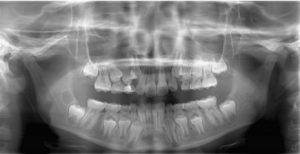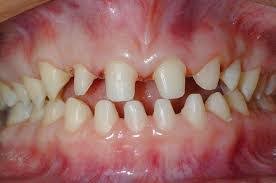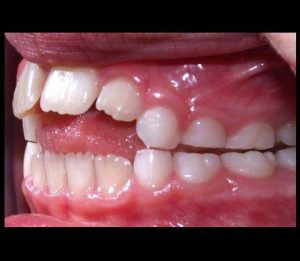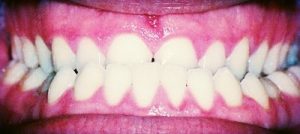What is Malocclusion?
What is Malocclusion
Malocclusion, or occlusion that has deviated from Class I molar relationship, can be a result of developmental, genetic and environmental factors. Class I malocclusion results when the relationship with the molars is normal, but the anterior (front) teeth are malpositioned, rotated, and out of alignment.

These factors can compromise an individuals’ long-term oral function including difficulty with chewing, making specific speech sounds, and even create pain in the temporomandibular joint triggering clenching and grinding activities. Long term clenching and grinding creates unnecessary stresses and strains on adjacent teeth, contributing to dental decay and periodontal disease. The most common developmental disturbances are malformed teeth, congenitally missing teeth, and interference with eruption. These factors can be caught at an early age while permanent teeth are still being developed with a panoramic radiograph. This panoramic radiograph shows a mixed dentition patient. Meaning they have both primary and permanent teeth (some unerupted) present in the mouth. A dentist would be able to determine if the permanent teeth were malformed or missing and begin interceptive treatment to prevent more extensive dental treatment in the future, before the permanent teeth have completely erupted into the patients’ mouth.

Unfortunately, genetics not only plays a major part in the size of your teeth, but your jaw as well. For example, you may have your mother’s small teeth and your fathers large jaw, resulting in excessive spacing. Or you may have a narrow palate with crowding, or even supernumerary (extra or multiples) teeth. In severe cases, there can be visible signs of dental deformities, leading to psychosocial problems, influencing one’s self-esteem. Environmental causes such as trauma during fetal molding (development) and birth or injury throughout life can often be traumatic and have devastating long-term effects. While we cannot control genetics completely, we can control social habits such as tongue thrusting, thumb and finger sucking, and mouth breathing.

Tongue thrusting and tongue thrust swallowing happens when the tongue is putting excessive force on the lingual (inside or closest to the tongue) surface of the teeth creating a forward pressure. This results in the teeth being forced forward. Thumb/finger sucking and mouth breathing both result in changes to the facial structure, especially after the age of five. The maxillary arch, palate, and anterior teeth become narrow and develop a pinched facial appearance. This leads to an open bite, or lack of vertical overlap of the maxillary incisors when the posterior teeth are closed also considered a Class II Malocclusion.

Class III malocclusion is an abnormal mesial relationship of the mandible to the maxilla. This gives the appearance that the mandibular anterior teeth are protruding in front of the maxillary anterior teeth, known as an underbite.

Orthodontics is not only cosmetic but considered necessary to restore normal function to many patients in these circumstances. Early diagnosis and treatment can lead to less invasive, procedures resulting in a more predictable outcome. With advances in Orthodontics to correct the alignment and cosmetic dental treatment, you can have a happy and healthy smile you are proud of.